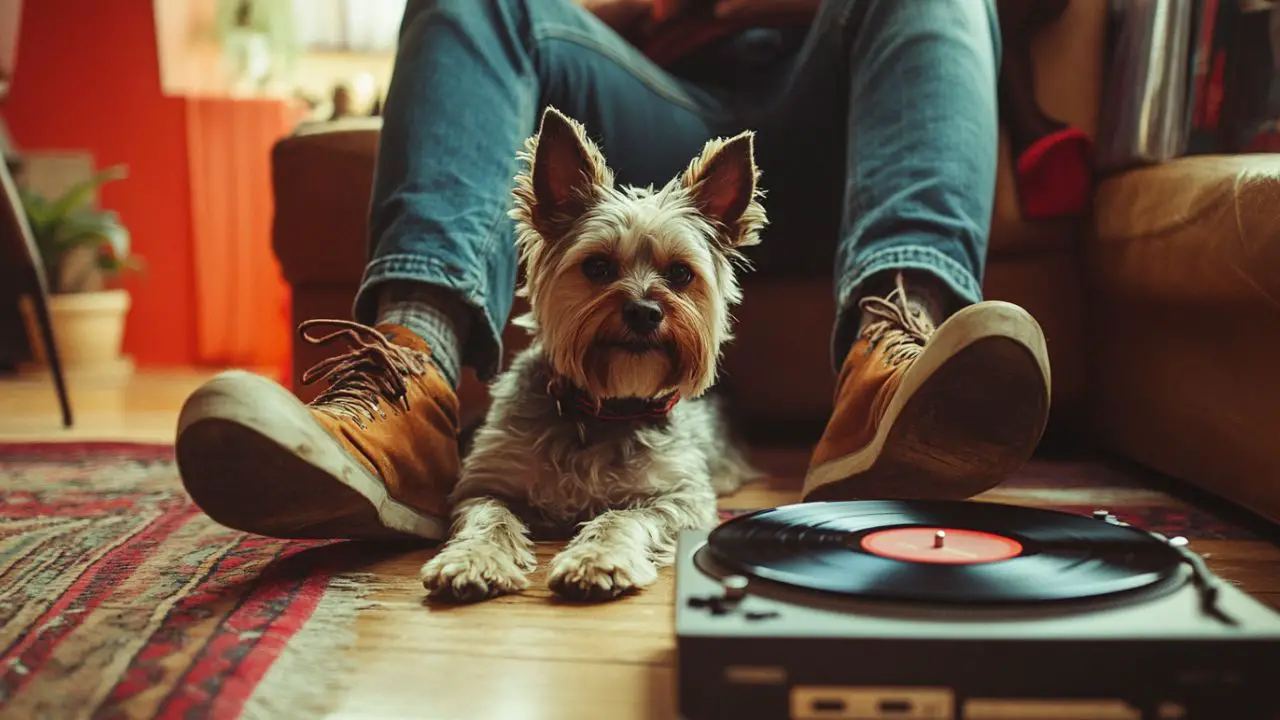Music has long been recognized for its profound effects on human emotions and behavior.
But did you know that our canine companions are also influenced by the power of melody and rhythm?
Recent studies have shed light on how music can impact dog behavior, offering exciting possibilities for enhancing our pets’ well-being.
Let’s explore the fascinating world of music and its effects on our furry friends.
Dogs and Musical Perception
Dogs, like humans, have the ability to perceive and respond to music.
Their hearing range is much wider than ours, allowing them to pick up on frequencies we can’t detect.
This enhanced auditory capability means that dogs may experience music in ways we can’t fully comprehend.
While they may not appreciate complex harmonies as we do, they are certainly attuned to rhythm, pitch, and tone.
Calming Effects of Certain Music Genres
Research has shown that certain types of music can have a calming effect on dogs.
Classical music, in particular, has been found to reduce stress and anxiety in shelter dogs.
Soft rock and reggae have also demonstrated positive effects on canine behavior.
These genres often feature slow tempos and simple melodies, which seem to resonate well with dogs.
Conversely, heavy metal or music with complex rhythms might increase anxiety or agitation in some dogs.
Reducing Separation Anxiety
One of the most promising applications of music for dogs is in addressing separation anxiety.
Playing calming music when you leave the house can help soothe your dog’s nerves.
Some pet owners report that leaving the radio or TV on provides comfort to their dogs when alone.
Specially designed “dog music” albums are now available, featuring sounds and rhythms tailored to canine ears.
Noise Phobia and Music Therapy
Dogs with noise phobias, such as fear of thunderstorms or fireworks, may benefit from music therapy.
Playing soothing music during these events can help mask frightening noises and reduce stress.
Gradually increasing the volume of calming music as the external noise grows louder can be an effective coping strategy.
This technique can be part of a broader desensitization program for noise-phobic dogs.
Music in Veterinary Settings
Veterinary clinics and animal hospitals are increasingly using music to create a more relaxing environment.
Soft, ambient music in waiting rooms and examination areas can help reduce stress for both pets and their owners.
Some veterinarians play classical music during procedures to help keep animals calm.
This application of music can lead to smoother veterinary visits and potentially better health outcomes for pets.
Enhancing Training Sessions
Music can also play a role in dog training sessions.
Upbeat, energetic music might help increase a dog’s enthusiasm during play-based training.
Conversely, calmer tunes can aid in teaching relaxation commands or during cool-down periods.
Some trainers use specific songs as cues for certain behaviors, leveraging the dog’s association between the music and the desired action.
Breed-Specific Musical Preferences
Interestingly, some studies suggest that different dog breeds may have varying musical preferences.
Smaller dogs seem to respond more positively to pop music, while larger breeds show a preference for classical tunes.
These preferences might be related to the pitch and frequency ranges that different-sized dogs can best perceive.
However, individual personality and past experiences also play a significant role in a dog’s musical tastes.
Creating a Musical Environment for Your Dog
When introducing music to your dog’s environment, start with low volumes and observe their reactions.
Pay attention to signs of relaxation such as lying down, sighing, or reduced panting.
Experiment with different genres and artists to find what works best for your individual pet.
Consider creating playlists for different situations, such as relaxation time or pre-walk excitement.
The Role of Human Emotion
It’s important to note that dogs are highly attuned to their owners’ emotions.
Your reaction to music can influence how your dog perceives it.
If you’re relaxed and happy while listening to music, your dog is more likely to associate those positive feelings with the sounds.
This human-canine emotional connection underscores the importance of choosing music that you also enjoy.
Potential Drawbacks and Considerations
While music can be beneficial, it’s not a one-size-fits-all solution for dog behavior issues.
Some dogs may be indifferent to music or even find it distressing.
Continuous background music might overstimulate certain dogs or mask important environmental cues.
Always monitor your dog’s reaction to music and adjust accordingly, ensuring it enhances rather than detracts from their well-being.
Conclusion: Harmonizing with Our Canine Companions
The impact of music on dog behavior offers exciting possibilities for enhancing our pets’ lives.
From reducing anxiety to aiding in training, music can be a powerful tool in canine care.
As we continue to explore this field, we may discover even more ways to use melody and rhythm to communicate with and support our furry friends.
Remember, each dog is unique, so what works for one may not work for another.
Take the time to discover what musical experiences resonate best with your canine companion.
By tuning into our dogs’ responses to music, we can create harmonious environments that benefit both pets and their human families.
Share this insight with fellow dog lovers and start exploring the musical preferences of your own furry friend today!
SHARE now with your friends!
- Hero Farm Dog Survives Epic Battle with Coyote Pack - December 9, 2024
- The 10-Minute Bedtime Routine That Changed My Dog’s Sleep Forever - November 29, 2024
- Creating a Safe Space for Nervous Pets: Your Guide to Pet-Friendly Havens - November 25, 2024

